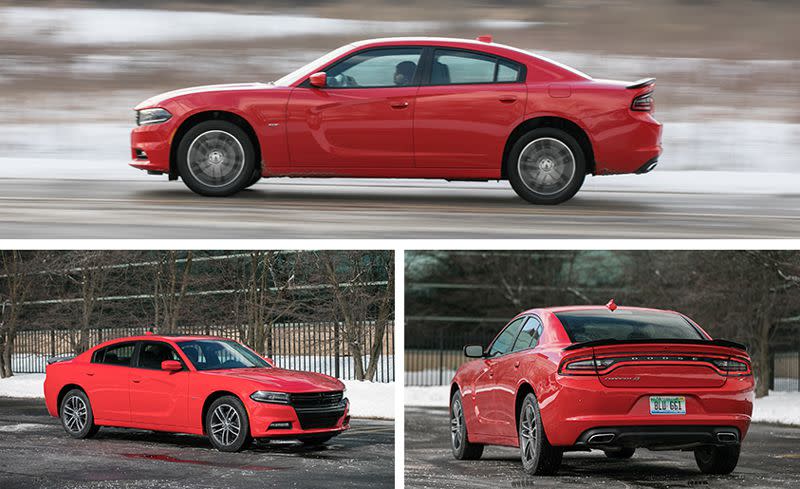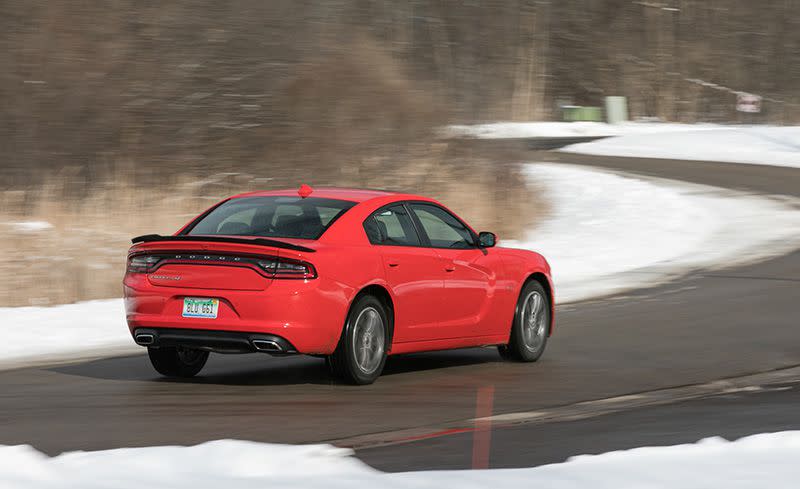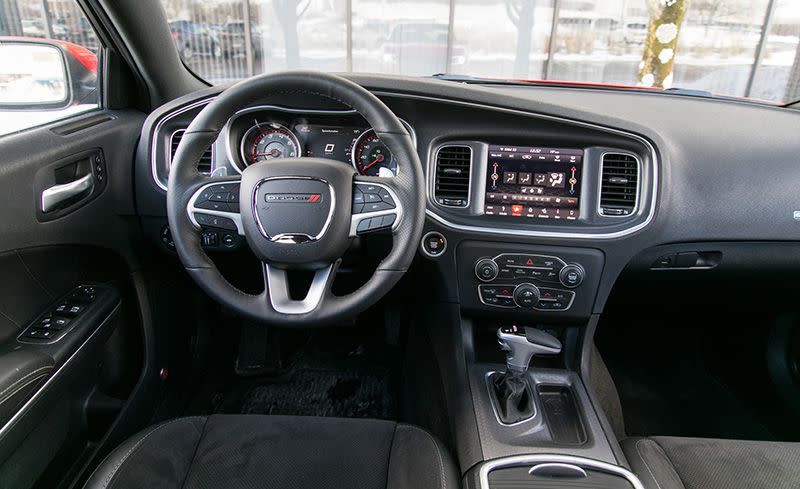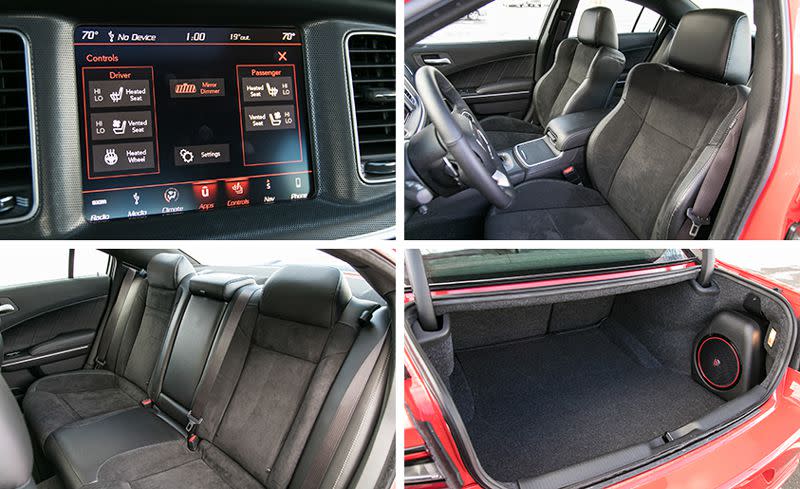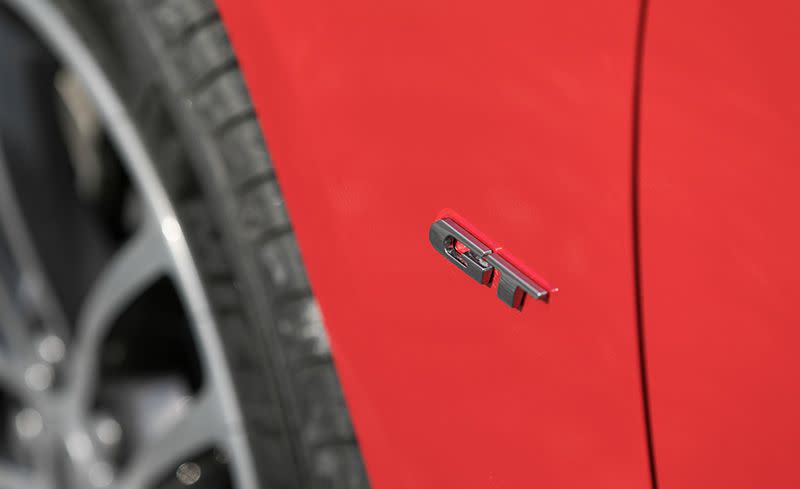2018 Dodge Charger GT AWD Tested: The Anti-Hellcat
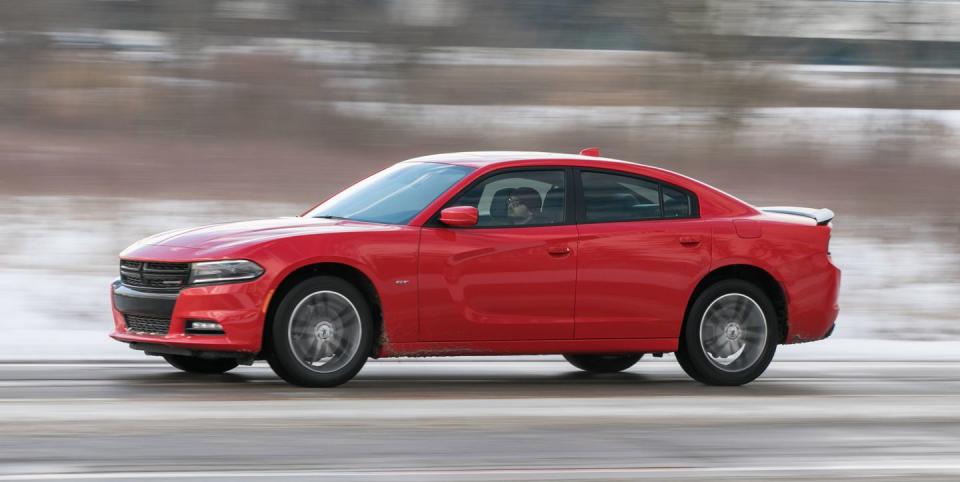
The Dodge Charger lineup covers a wide spectrum when it comes to purpose and capability. It’s rare for a single car model to offer variants that can appeal to multiple markets with completely different missions, all while maintaining a measure of practicality.
With the Chevrolet SS now defunct, the Charger-along with its sibling, the Chrysler 300-is the last remaining rear-drive-based traditional American four-door from a nonluxury brand (we see you, Cadillac). It’s also the only sedan in Dodge’s portfolio, so it’s forced to work multiple shifts.
The base price ranges from about $30,000 to $70,000, and where else can you find a 415-hp spread, in this case from 292 horsepower up to 707, in a vehicle that’s also suitable for families? It’s also a rare modern model that does not offer any turbocharged or four-cylinder engine options (although the SRT Hellcat is supercharged). With all that in mind, the GT tested here is toward the bottom end of the Charger ladder. With a $795 GT Performance package, a $995 Navigation and Travel package, and a $1995 Sun and Sound package tacked on, our Charger GT Plus all-wheel-drive test car came in at $41,325.
Horsin’ Around
The lowest totem on the Charger’s power pole is the 3.6-liter Pentastar V-6. In the base SXT and SXT Plus, it makes 292 horsepower at 6350 rpm and 260 lb-ft of torque at 4800 rpm, and like all other Charger engines is paired with an eight-speed automatic. The next-step-up GT and GT Plus get an extra 8 horses and 4 lb-ft (for totals of 300 and 264), but their biggest deviation from the rest of the Charger lineup is their standard all-wheel drive.
The Charger’s image is of a tire-shredding muscle car, but the availability of all-wheel drive broadens the model’s appeal to more customers. Although all-wheel drive is not new to the Charger, its consolidation under the GT nameplate came with the 2018 model year. The system primarily operates in rear-wheel drive with the front axle disconnected; when sensors detect wheel slippage, it automatically funnels torque to the front wheels via an active transfer case.
Civil Engineering
That V-8 Chargers have four doors and seat five people is secondary to the car’s identity as a muscle machine. But GT AWD shoppers will have passenger needs more at the forefront of their consideration criteria.
As it is in other Fiat Chrysler products, the Uconnect infotainment system is a shining star inside the Charger. The Navigation and Travel group adds navigation and Sirius traffic tools to the long list of capabilities available on the large 8.4-inch touchscreen display. A line of static icons at the bottom makes it easy to call up radio, media, climate, apps, settings, navigation, and phone functions. Response time is good, screen resolution is better than most, and the system supports both Apple CarPlay and Android Auto. A Uconnect phone app makes connectivity and diagnostics even simpler.
The environment in which the entertainment offerings is experienced is equally important, though. Unfortunately, the Charger’s sparsely appointed interior is reminiscent of the Banks family’s living room in the final scene of The Fresh Prince of Bel-Air. The only color options are black or two-tone black and pearl (off-white). Our test vehicle was all black save for some small bits of metallic trim.
Although the layout is uncluttered and easy to use, it’s impossible to overlook the low-quality rubberized plastic on the dash and the hard plastics throughout the cabin. From irregular gaps to loose pieces of trim, the interior showed poor fit and finish-issues we’ve seen on multiple Chargers.
At least the cabin is functional and comfortable. The chunky front seats with large side bolsters are a nod to the Charger’s muscle-car side. Cushioning is fairly aggressive, which some comfort-minded drivers may not prefer on long drives, but the seats are not overly stiff. Compared with other large sedans, driver and front-passenger space is lacking, but rear passengers enjoy some of the best legroom in the segment. The Charger’s massive trunk is perfect for carrying a family’s worth of suitcases, although the folding rear seatbacks do not lay flat for easily loading longer items.
Big Time
Behind the wheel, the Charger feels as big as its personality. It’s 8.2 inches longer than a Kia Stinger and 0.9 inch longer than a Buick LaCrosse. Its width and height are at the top of mainstream sedans as well. Inside, it has one of the highest hip points among its peers, and yet the bulging hood still hinders forward visibility. A thick steering-wheel rim and the mallet-like gear shifter add to the puffed-up vibe.
All that size and the all-wheel-drive equipment add up to a portly 4281 pounds on our scales, which hinders acceleration times. The GT AWD’s groaning Pentastar tugged it to 60 mph from a standstill in 6.4 seconds, which is 0.2 second slower than a rear-wheel-drive 2016 SXT and also slower than the V-6–powered Nissan Maxima, Buick LaCrosse, and Toyota Avalon. As expected a Charger Daytona with the 370-hp V-8 was much quicker in the same test, with a time of 5.1 seconds. During acceleration, the GT’s eight-speed transmission is quick to upshift but those shifts sometimes feel abrupt.
Once up to speed, the racket dies down and the GT finds its sweet spot. At a 70-mph cruise, the Charger allowed only 68 decibels of noise intrusion, among the best showings in its segment. The quiet cabin matched the calm ride, which is composed and comfortable not only on the highway, but at lower speeds around town, too.
The GT is less comfortable when asked to corner. Turn-in is vague, steering response is slow, and there is little to no road feel; blame the relatively tall sidewalls of the AWD cars’ tires, which aid ride comfort but dilute chassis feel. For the most part, the big body stays level, but understeer comes in quickly. In our testing, the GT AWD’s 0.79 g on the skidpad is significantly worse than the rear-wheel-drive SXT at 0.86 g and is only 0.01 g better than the Avalon.
That this car’s numbers align closely with those of the LaCrosse and the Avalon is not necessarily a strike against it. Despite its age and flaws, the Dodge Charger GT AWD remains a flavorful family sedan, and as just one entry on a large menu, if this one isn’t to your taste, there still may be a Charger that is.
You Might Also Like

 Yahoo Autos
Yahoo Autos 